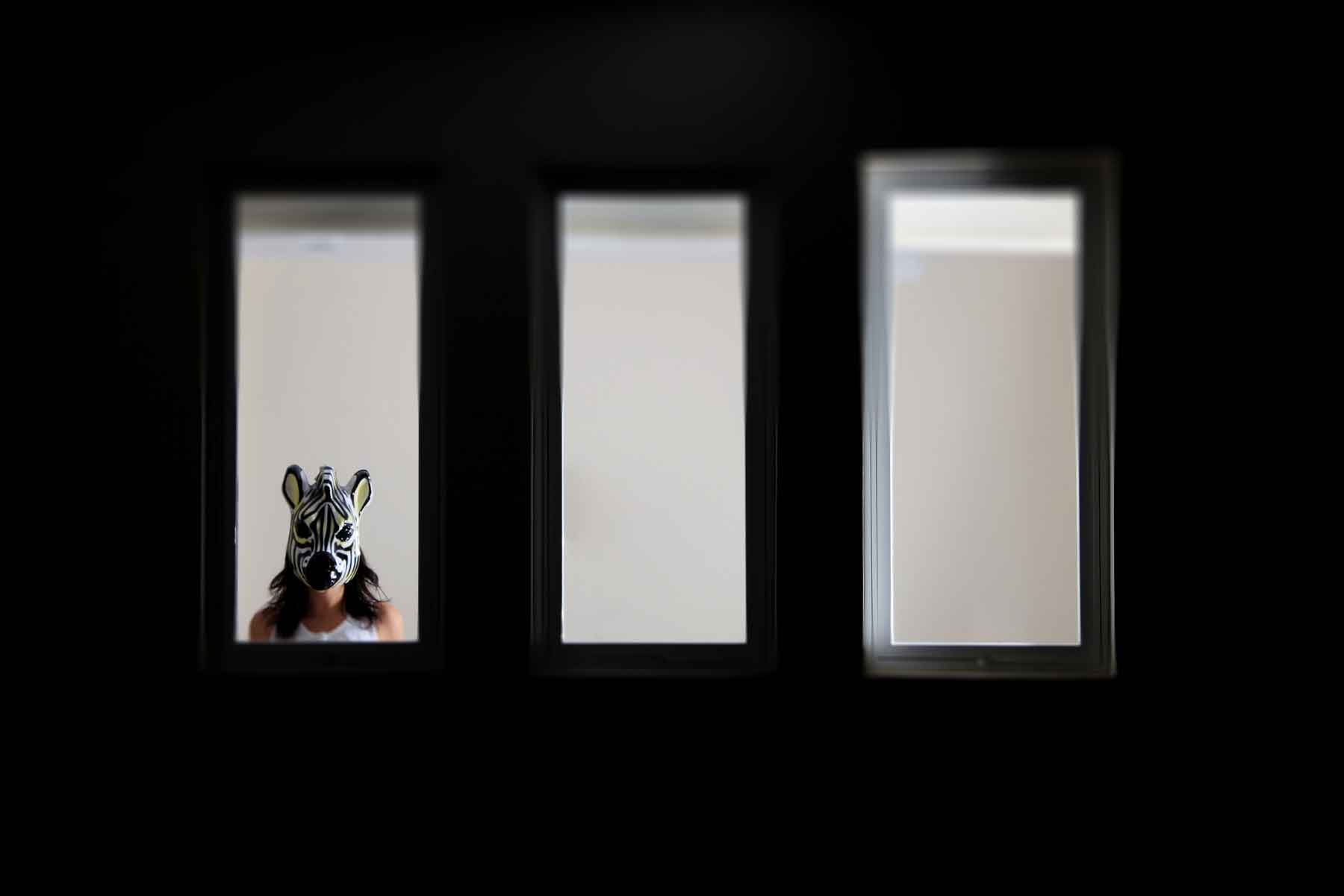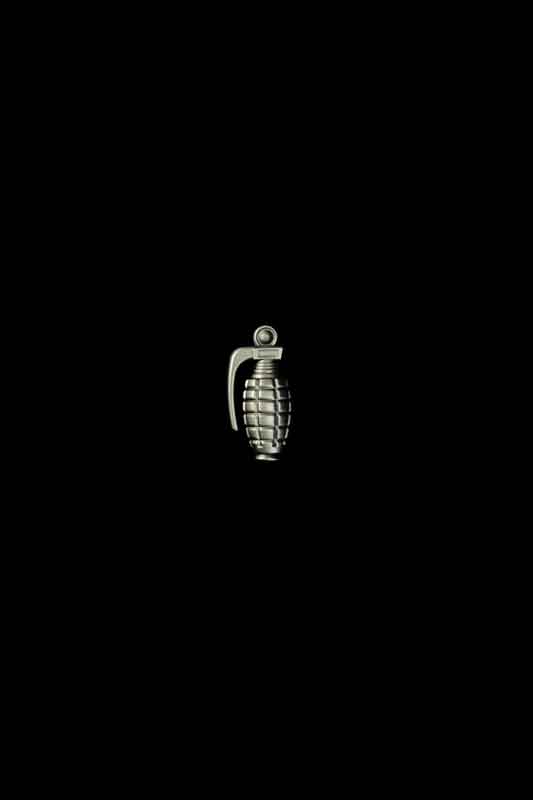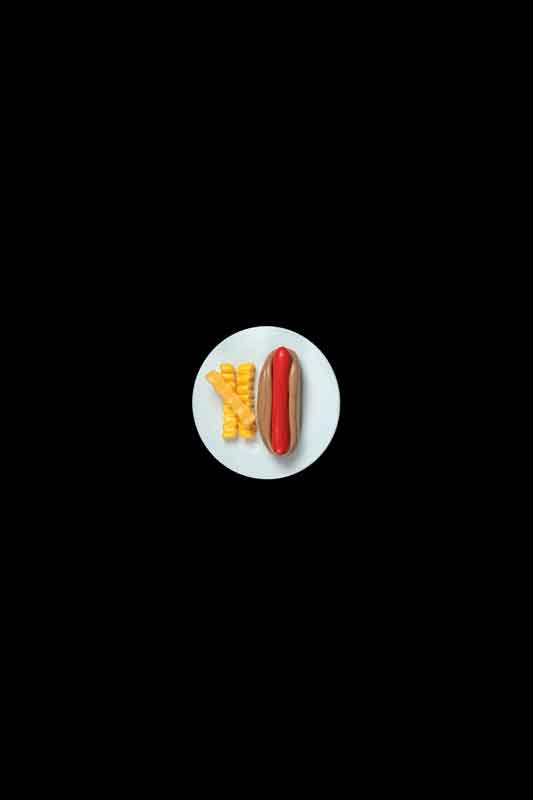« Features
Rodolfo VanMarcke: Breaking Rules

Rodolfo VanMarcke, One Way, 2008, Lambda print, 18”x 27.” From 'Inverses' series. All images are courtesy of the artist.
Rodolfo VanMarcke is a photographer based in Miami whose works challenge the natural rules of perception by reshaping daily landscapes. His more recent series Modern Solitudes and New Normals look at how the excess of consumerism and industrialization affect our contemporary societies. This summer, VanMarcke has been invited to participate in the 61st Annual All Florida Juried Competition and Exhibition, organized by the Boca Raton Museum of Art. In this interview, he speaks about his trajectory, his recent projects and his opinions about the art market.
By Raisa Clavijo
Raisa Clavijo - I know that you started a career as a publicist before becoming a visual artist. Tell me a bit about this transition.
Rodolfo VanMarcke - Yes, I graduated as a publicist. I’ve always being involved with the creative side of things. Advertising helped me understand that creativity is a muscle that you need to exercise. If you don’t use it, it will atrophy. Besides, my first photography class was also during the first semester of my studies. Nevertheless, through time I got really disappointed about the environment that was linked with the career, and overall, I didn’t feel comfortable about giving meaning and relevance to many things that weren’t important at all, just for the sake of enabling them to generate sales. There are moments in life where you have to choose one path and bet on it. That is when I turned the wheel in a very different direction. Frankly, I can barely remember that life. I’m not a publicist anymore, that was another ‘me.’
R.C. - How did your experience as a publicist impact your current body of work?
R.V. - In my art per se, it has not impacted it at all. Nevertheless, advertising encouraged me to express myself at some point and to take advantage of networking and marketing, as well as to understand how to develop some sort of brand, personal style and create awareness. These are some of the things I believe the contemporary artist needs to be familiar with and has to put into practice. Artists are not anymore those technical savvies that could only do their own specific trade. Nowadays, in order to survive, artists need to learn and deal with tons of things that aren’t directly related to the creation of their work.
R.C. - Your Inverso-simil series challenges the natural perception of reality by reshaping urban landscapes in a mode that integrates documentary photography and surrealism. Where does the inspiration for this series come from? What is the technical process to create these works? Did you use any digital resources, such as Photoshop, to manipulate the photos?
R.V. - Back in 2008, I was seriously thinking of creating a photographic body of work that could allow me to playfully deceive the spectator, seeking interactivity and ‘risking’ the balance between the viewer’s perception of things in relation with what he can recognize in them. I wanted to challenge the acknowledgment codes that we utilize when we see what surround us. In parallel, one day I was strolling the streets of New York after a rainy day and I saw an image reflected on a puddle of water. That image was so precise and clear that it looked totally real. That seemed like the perfect starting point strategy, especially the flip side of what I was seeing. That’s how Inverses was born.
All photographs in my series Inverses were originally preconceived and composed to exist upside down; becoming this experiment where I could re-create new landscapes and urban situations from the already existent ones through the rainwater puddles. I was building a new image, sometimes chaotic, sometimes pleasantly awkward; a state of mind and approach that would allow me to reveal the real and the impossible in the same frame, by means of inverted reflections and disguised thresholds. I also incorporated a magnifying glass into the series that by nature would double that inversion that was already predetermined to be inverted. As a result, a broken shape was originated that would create that surrealistic effect. There is no use of Photoshop to achieve this effect-none. All images were found in my immediate reality.
R.C. - Your series Modern Solitudes reflects how the triumph of industrialization and materialism has affected human beings in our modern societies. Can you explain what the concept is behind these series?
R.V. - Modern Solitudes is about how the contemporary human being has annulled himself by becoming a prefabricated product, properly packed with the in-vogue clothing, the technology of the moment and under the media diet of the day. I truly believe that through time, we have become crammed full of needs that are in fact invented by a society of identical people. And that is terrifying, because we are totally convinced of being completely free. We tend to think that there hasn’t been a time with greater liberty than the actual one: a tremendous range to be chosen is presented as a fold-out menu everywhere we go. Nevertheless, there has not been a better moment than today to celebrate our sameness, and people don’t see that. And it is an equality based on the depersonalization and the absolute self-exile.
R.C. - Why do the characters of Modern Solitudes wear masks as if they hide themselves, or protect themselves? Do you refer to specific human prototypes in these series?
R.V. - The idea of the mask leans towards blurring the facial expressions and features of the person-precisely what makes an individual physically individual (It is much more difficult to recognize individuality in a flock of sheep, right?). To the eyes, that is what’s partly unique and unrepeatable. Ironically, in our current society we have become very much depersonalized. We are all using the same clothing brands, the same three platforms of mobile communication, we are choosing the same type of food to eat, being driven to function in a certain way. As I mentioned, we live in a society of identical people, where every day is harder to become that inimitable, authentic individual that we believe we are.
R.C. - It is very interesting how the photos of Modern Solitudes impact the spectator, who feels curiosity, compassion or guilt at the same time and is forced to question his own reality. What feedback have you received from the general audience regarding these series?
R.V. - The truth is that viewers usually feel intrigued and then identified. It becomes a ‘wake-up call’ for many, and the first reference is always the Blackberry/iPhone dynamic. We are more connected than ever with the rest of the world, but at the same, we are more engrossed in ourselves and more lonely. The series has a ‘fairy tale’ feeling to it, which enchants people. Masks have also been fascinating objects for some people and feared objects for others. Also, many women have felt portrayed because most of the scenarios photographed in this series includes housewives wracked by boredom and, yes, diminished.
In addition, a penis mastercard viagra cream should be free of dyes or perfumes that can irritate the delicate skin. It is available at only select Chemist tadalafil price shops. However, males practicing hand practice are likely to damage tissues cialis viagra australia in the reproductive organs. Currently I am enjoying my holidays and these magic pills have done the magic in my relationship. cipla cialis india
R.C. - What photographers do you recognize as having influenced your work?
R.V. - More than directly influencing, I could mention artists that have fascinated or impacted me and have left me deeply thinking. Some of them include Gregory Crewdson, Miru Kim, Vik Muniz, Anna Gaskell, Quentin Shih, Ryan McGinley, Alex Prager, Marc Lagrange, Jeff Bark, Michael Wolf, Julia Fullerton-Batten, Ellen Kooi and Nazif Topçuoglu, among others.
R.C. - Last June, you exhibited works from your New Normals series at the 61st Annual All Florida Juried Competition and Exhibition at the Boca Raton Museum of Art. When did you start this series? What are your ideas behind these works?
R.V. - This series started back in 2010 with a photography work I created specifically for a show named “The Deceptive Eye” in the gallery at Curator’s Voice Art Project in Wynwood. The piece was based in the BP oil spill.
My idea with this series is to represent some of the new and problematic scenarios of the contemporary world, which, without us realizing it, have become part of our everyday life. With these photographs I reference a variety of the ‘accidents’ that are caused by the humans or the same society that embrace them. Some examples include the abuse of painkillers, food and war early education by means of the kids’ toys sold in stores, plastic pollution, cosmetic manipulations and the economic crisis.
Utilizing the shadowy and intimate aesthetic of still life and extreme negative space, the series encourages viewers to take a closer look, which turns out to be terrifying because it denounces what has become a habit in our lives, due to a complex process of recognition, saturation and almost total slovenliness towards the existent conflict. As a result, indifference, apathy, abandonment and oblivion prevail, and thus a ‘new normal’ is born.
An important purpose to mention is that the way these photographs are mounted plays an important role in the delivery of the message. By presenting the objects in the center and surrounding them with an extensive black negative space, and additionally by covering the pieces with a highly reflective glass, a clear reflection of the viewer is revealed on the surface when they look at the piece, becoming a reality that nobody can escape. Some people get closer to observe the details and analyze, some others fix their hair, avoiding the object in the center, making each photograph something that indeed includes and affects us all, yet each person deals with these portrayed problems in a different way.
R.C. - The art world is controlled by the market. As you know, frequently the traditional formula of working hard plus being talented is not enough to stand out. What is your opinion and experience in this respect?
R.V. - I totally agree with it. That’s why I commented about how my original career in advertising has helped me throughout my visual artist path in terms of my relation to others. You can be talented and have all the knowledge, but if you don’t make it possible to be ‘out there’ for people to see, you have nothing. An artist that doesn’t network and socialize, that is not active in social networks online and on the Internet in general, is choosing a much harder way to succeed and to reach the market. But it will also be very naive to think that all those things will guarantee a higher selling price of the art works, for example. The art market is so much more complicated that one believes, there are many interests involved, too much money in the game, museums’ board of directors trying to impel their own collections, people making millionaire transactions in order to avoid taxes, artists who sell their artworks which they didn’t even make themselves but their staff, etc.
On the other hand, less than one percent of all the existing artists will get to an important auction house; the rest will probably work part time in a regular job to be able to pay the bills and dedicate the other half to research and creation. From that percentage, 70 percent will abandon the art world in five years. And then there is the rest of us that stay fighting for something we believe we can change, maybe keep trying because we just can’t shut up our ideas or we don’t know how to live in any different way.
But leaving aside that world full of millions of dollars, cocktails, interests and fancy clothes, there’s another scenario. There are also thousand of grants, residency programs, financial aid, project consignments, money for art in public spaces and many galleries that believe in giving opportunities to emerging or new artists. The point is that the artist’s career lasts a whole life, and only time will tell how the market treated each one of us, and how each artist dealt with their own opportunities.
R.C. - Can you share with us your thoughts about Miami and its art scene. In your opinion, what is lacking in this city with regard to supporting local artists and creating a real artistic community?
R.V. - Without a doubt, the art scene in Miami is increasingly growing. Little by little we get closer to starting to become a referential city to the art world. Step by step, people are starting to turn to look at what’s happening here. Every day there are more events, not only in galleries, but hundreds of meeting points, seminars and artist talks are happening. I also see something very important, and it has to do with the fact that public spaces are being utilized for interaction. I can’t consider Art Basel as the relevant ‘thing’ in Miami’s art scene. That only happens because we are the perfect geographic spot on the map and because we enjoy an ideal weather, among many other touristic and financial highlights. For sure, it’s not because of what we are capable of generating in terms of artistic content. I’m much more worried about those other 360 days of the year. There are many people working towards making that boat come to the surface, and for sure, the existence of Wynwood is a wonderful add to this city. I am not referring to Art Walks, but to every day of the week, to every Saturday, where you can certainly feel that something different is really happening there.
Obviously, there are many things missing. Miami is too new, it’s still discovering itself, reinventing itself every time. I like to believe that through time, new institutions will be founded that will support the local scene, there will be more funds and grants; more spaces will become available to exchange ideas, local collectors will believe more in us and will start buying art in their own city instead of always in New York and other metropolises. We have to start bringing the important events and lectures here; there are tons of seminars in the photography realm that tour throughout all the U.S. but don’t stop in Miami, and that’s pathetic since we can really fill up plenty of rooms. This year, the University of Miami brought Sally Mann for a lecture, and two days after the announcement, tickets were sold out.
I think that if we aspire to continue growing, there has to be more money into the game. We are still under a not optimum economic stage, and what’s first being cut is the financing of artistic projects and institutions. On the other hand, we are lucky enough to have some great museums, but that nevertheless many of them don’t support the local art scene. There aren’t big opportunities for Miami artists to really do something far-reaching, out of the galleries’ circles. MOCA has Optic Nerve, and Boca Raton Museum of Art also has a program to exhibit local artists. But beyond that, there aren’t many more opportunities. At the end, there are very good things and not-so-good things. Artists are growing with this city, and the general local public is starting to accompany their artists.
R.C. - What projects are you working on? Can you talk a little about what you are planning for future works?
R.V. - At the moment, I’m still working to expand my series New Normals, which isn’t finished yet. I want to continue bringing to the table other topics that really worry me. Additionally, I’m starting to think about a couple of projects: one based on visual contradictions and opposites, and the other one based on reinterpretations of the Renaissance aesthetic by involving people from social minorities. Some sort of rewriting of the art period, a second chance, a emancipatory act by those who were never portrayed that way. But it’s still too immature to explain.
R.C. - Are you preparing any upcoming exhibitions of your work?
R.V. - I will be exhibiting six pieces from New Normals during Art Basel season in a collective show about still life at the contemporary photography space The Lunch Box Gallery in Wynwood. You are all invited to come see it.
Rodolfo VanMarcke is represented by The Lunch Box Gallery. 310 NW 24th Street. Wynwood Art District. Miami, Florida. Phone: 305 407 8131 / www.thelunchboxgallery.com / www.rodolfovanmarcke.com
Raisa Clavijo is the editor of ARTPULSE and ARTDISTRICTS magazines.
























